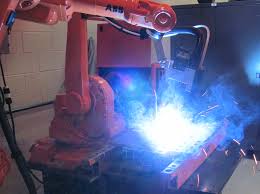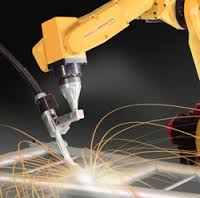
There are two main requirements for the development of intelligent industrial systems: (i) learning and adaptation in unknown environments, (ii) compensation of model uncertainties as well as of unknown or stochastic external disturbances. Learning can be performed with the use of gradient-type algorithms (also applied to nonlinear modeling techniques) or with the use of derivative-free stochastic algorithms. The compensation of uncertainties in the modelís parameters as well as of external disturbances can be performed through stochastic estimation algorithms (usually applied to filtering and identification problems), and through the design of adaptive and robust control schemes.
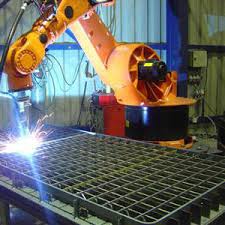
Incorporating intelligence in industrial systems can help to increase productivity, cut-off production costs, and to improve working conditions and safety in indus- trial environments. This need has resulted in the rapid development of modeling and control methods for industrial systems and robots, of fault detection and iso- lation methods for the prevention of critical situations in industrial work-cells and production plants, of optimization methods aiming at a more profitable functioning of industrial installations and robotic devices and of machine intelligence methods aiming at reducing human intervention in industrial systems operation
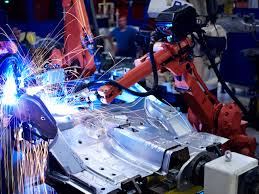
In the area of industrial robots one can distinguish between two main problems: (i) robots operating in a free working space, as in the case of robotic welding, paint- ing, or laser and plasma cutting and (ii) robots performing compliance tasks, as in the case of assembling, finishing of metal surfaces and polishing. When the robotic manipulator operates in a free environment then kinematic and dynamic analysis provide the means for designing a control law that will move appropriately the robotís end effector and will enable the completion of the scheduled tasks. In the case of compliance tasks, the objective is not only to control the end effectorís po- sition but also to regulate the force developed due to contact with the processed surface. There are established approaches for simultaneous position and force con- trol of robotic manipulators which were initially designed for rigid-link robots and which were subsequently extended to flexible-link robots
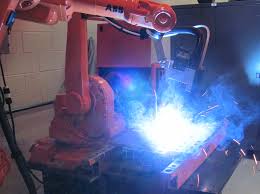
In the area of adaptive control for industrial robotic manipulators it is necessary to design controllers for the non-ideal but more realistic case in which the system dynamics is not completely known and the systemís state vector is not completely measurable. Thus, one has finally to consider the problem of joint nonlinear estimation and control for dynamical systems. Most nonlinear control schemes are based on the assumptions that the state vector of the system is completely measurable and that the systemís dynamical model is known (or at least there are known bounds of parametric uncertainties and external disturbances). However, in several cases measurement of the complete state vector is infeasible due to technical difficulties or due to high cost. Additionally, knowledge about the structure of the systemís dynamical model and the values of its parameters can be only locally valid, therefore model-based control techniques may prove to be inadequate. To handle these cases control schemes can be implemented through the design of adaptive observers, and adaptive controllers where the state vector is reconstructed by processing output measurements with the use of a state observer or filter. In the area of robust control for electromechanical systems one has to consider controllers capable of
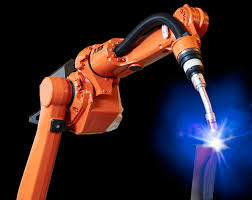
Robust control or industrial robotic manipulator aims at maintaining the desirable performance of the industrial or robotic system despite unmodeled dynamics and external disturbances. The design of such controllers can take place in the time domain, as in the case of sliding mode control or H-infinity control. These two types of control can be particularly useful for robotic and motion transmission systems.
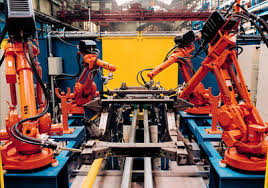
The functioning of industrial robotic manipulators in a networked envirnoment and the the real-time collaboration with other robots, as well as the processing of measurements from various types of sensors requires the developement of filtering and estimation methods that will refine the transmitted information and will provide the robots control loop with robustness to uncertain or ambiguous sensory input. Additionally, the development of control systems over communication networks requires the application of nonlinear filtering for fusing distributed sensor measurements so as to obtain a global and fault-free estimate of the state of large-scale and spatially distributed systems. Filtering and estimation methods for industrial systems comprise nonlinear state observers, Kalman filtering approaches for nonlinear systems and its variants (Extended Kalman Filter, Sigma-Point Kalman Filters, etc.), and nonparametric estimators such as Particle Filters. Of primary importance is sensor-fusion based control for industrial systems, with particular applications to industrial robotic manipulators, as well as to mobile robots and autonomous vehicles. Moreover, the need for distributed filtering and estimation for industrial systems becomes apparent for networked control systems as well as for the autonomous navigation of unmanned vehicles.
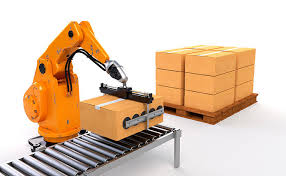
In the area of vision-based industrial robotic systems one can note robotic visual servoing as an application where machine vision provides the necessary information for the functioning of the associated control loop. Visual servoing-based robotic systems are rapidly expanding due to the increase in computer processing power and low prices of cameras, image grabbers, CPUs and computer memory. In order to satisfy strict accuracy constraints imposed by demanding manufacturing specifications, visual servoing systems must be fault tolerant. This means that in the presence of temporary of permanent failures of the robotic system components, the system must continue to provide valid control outputs which will allow the robot to complete its assigned tasks. Nowadays, visual servoing-based robotic manipulators have been used in several industrial automation tasks, e.g. in the automotive industry or in warehouse management. Moreover, visual servoing over networks of cameras can provide the robotís control loop with robust state estimation in case that visual measurements are occluded by noise sources, as it usually happens in harsh industrial environments (e.g. in robot welding and cutting applications).
